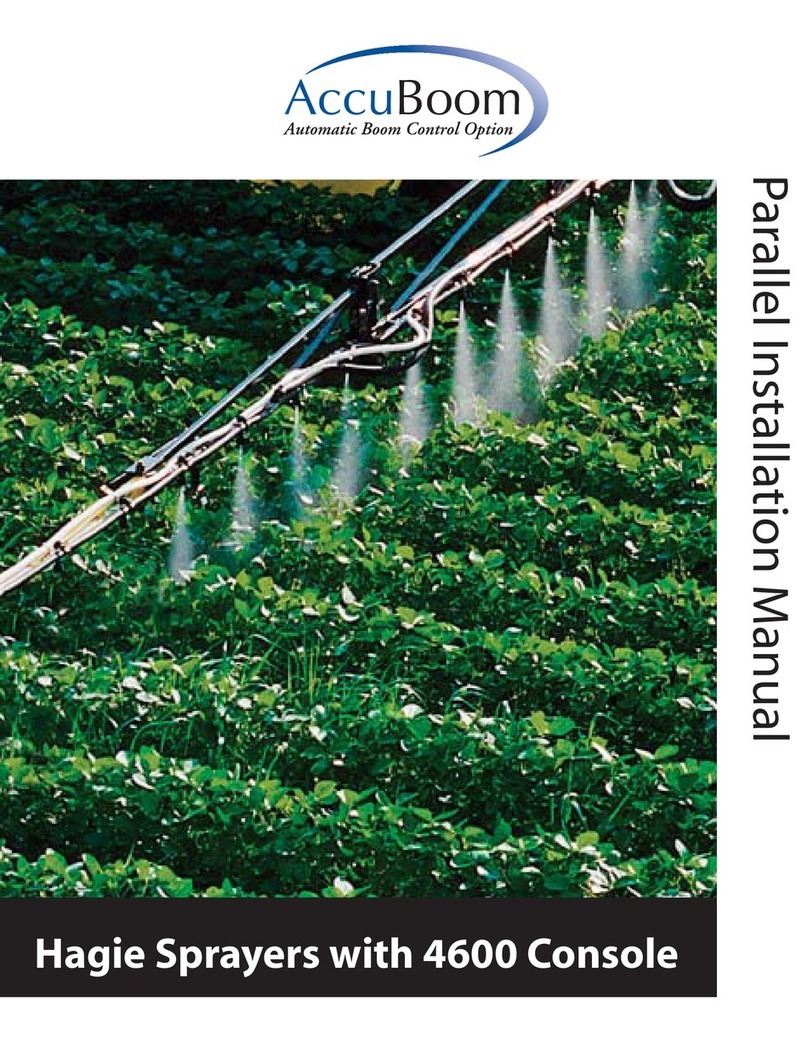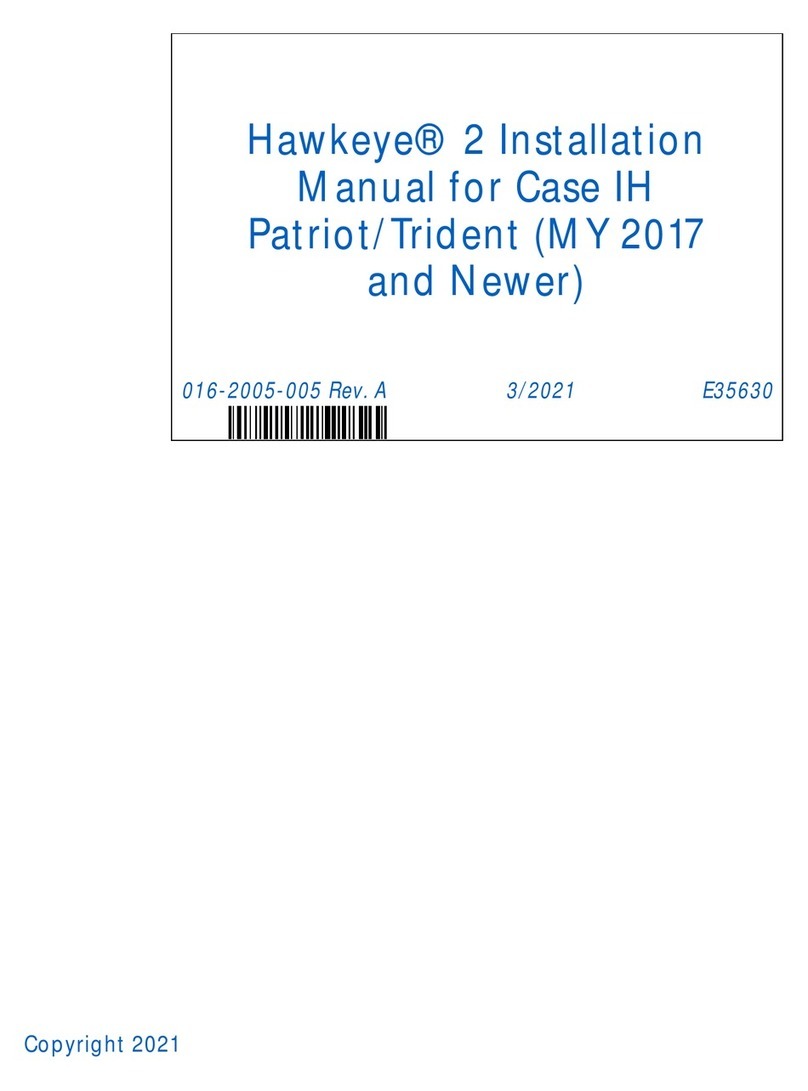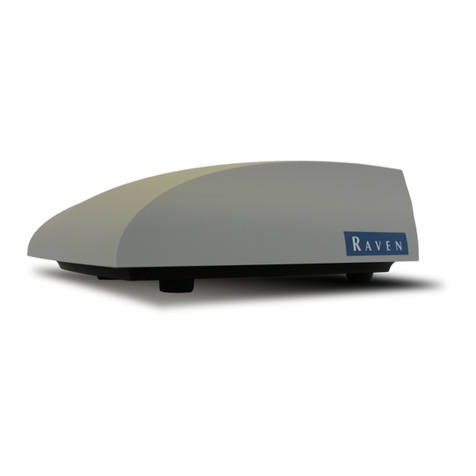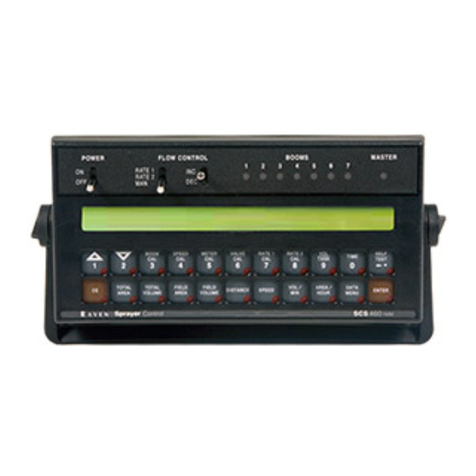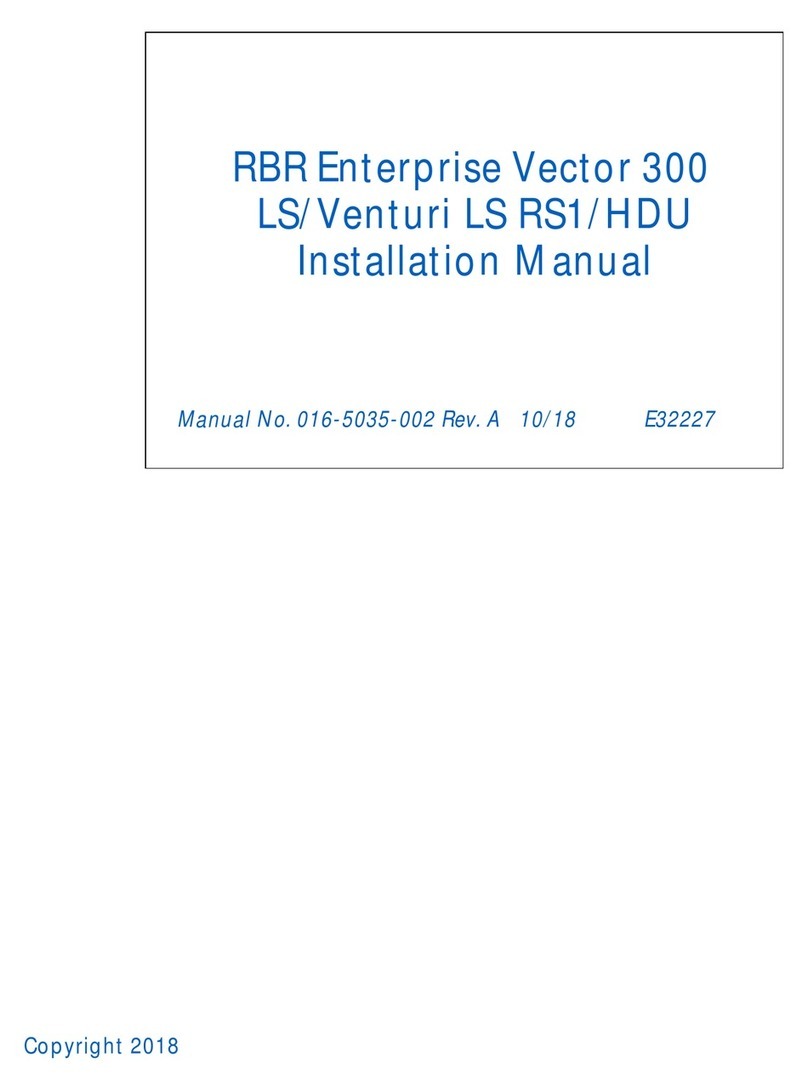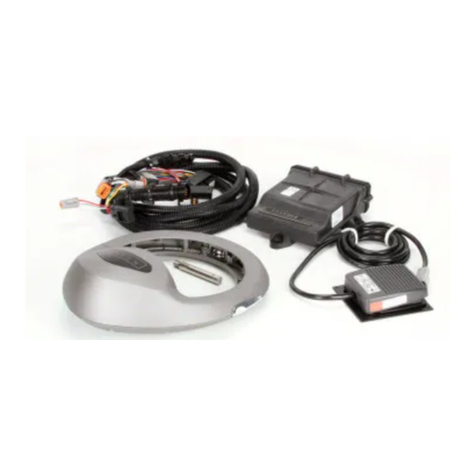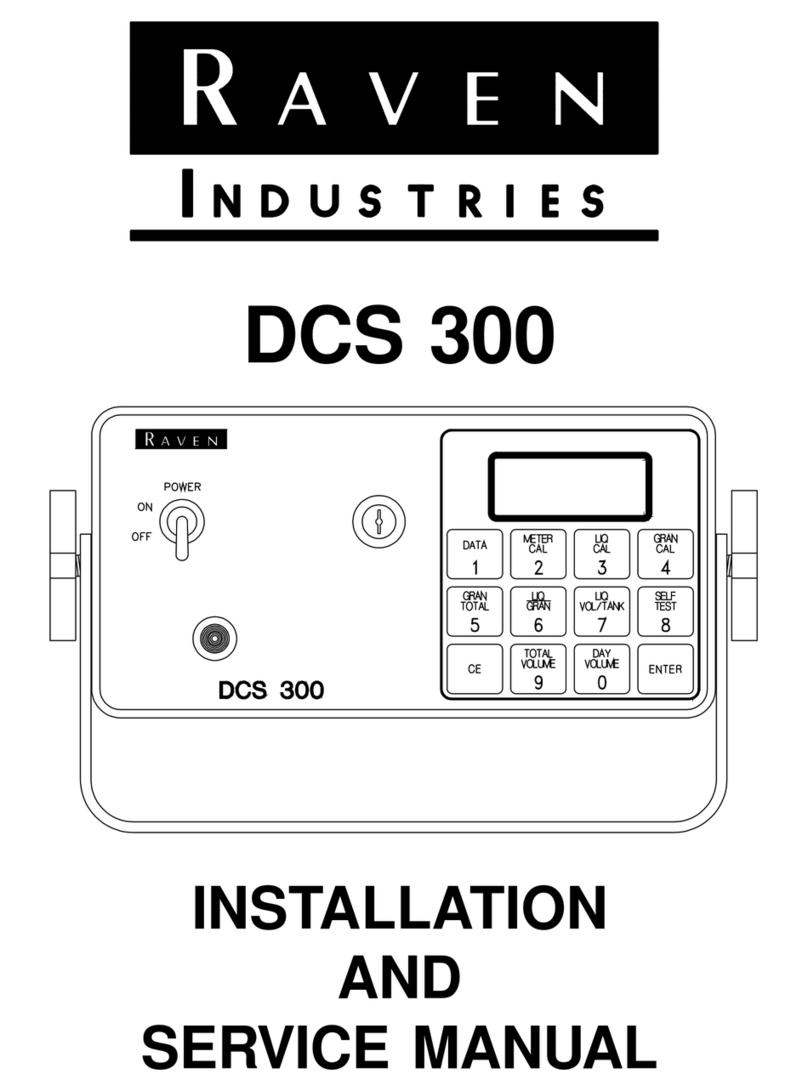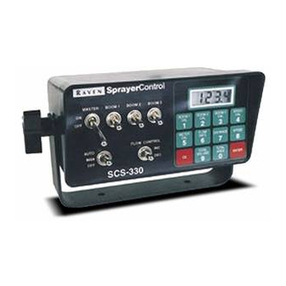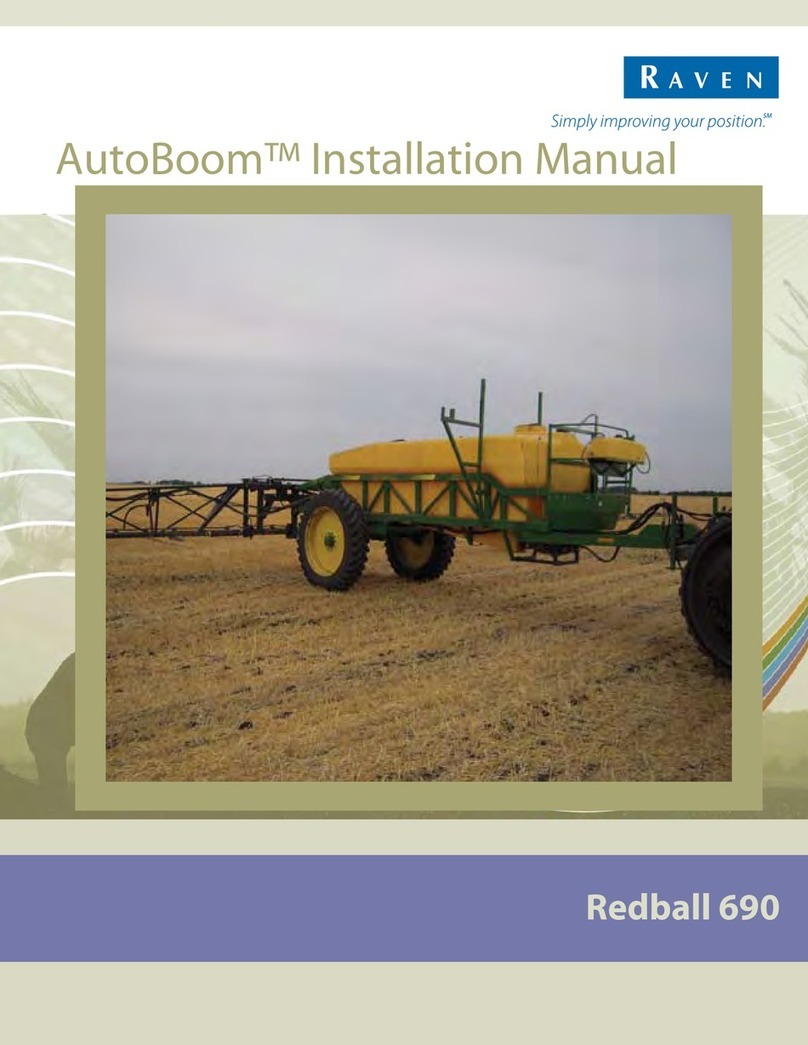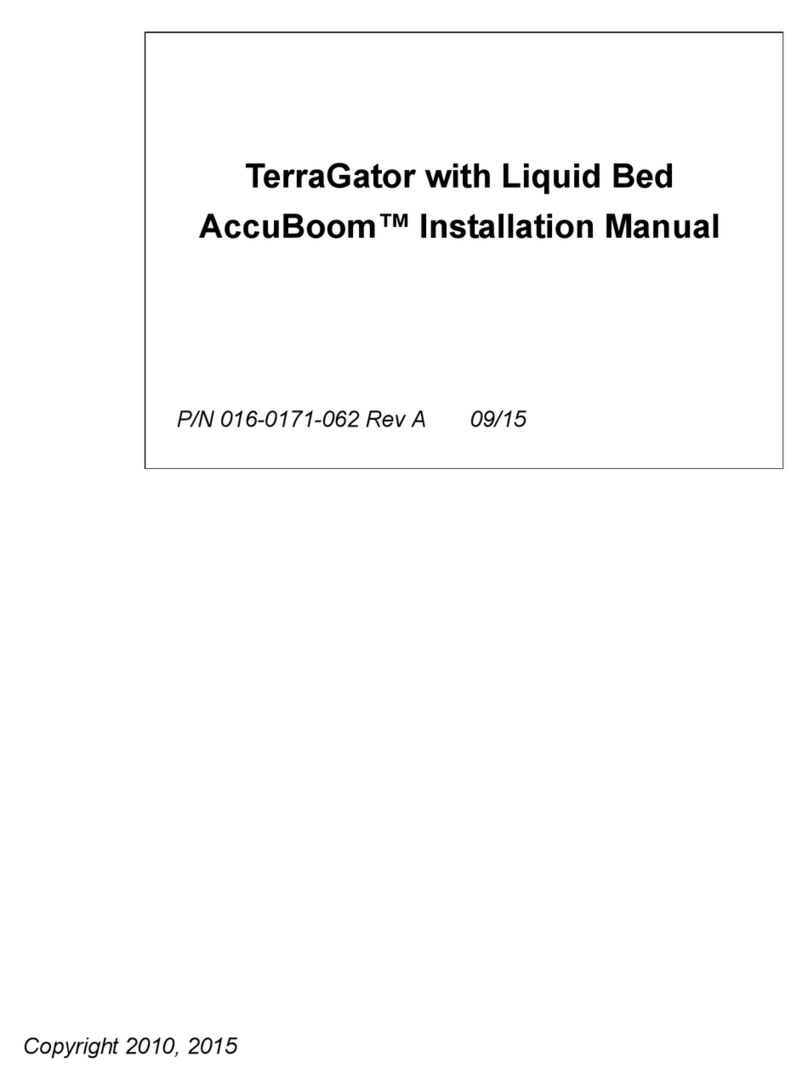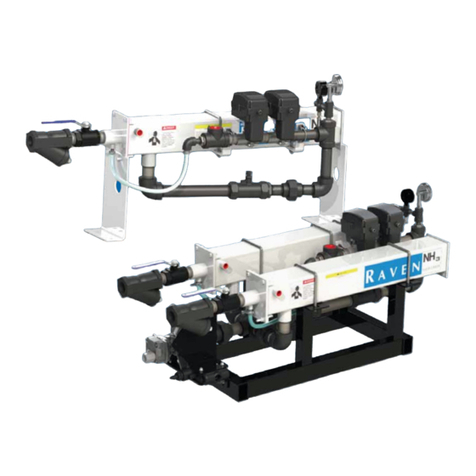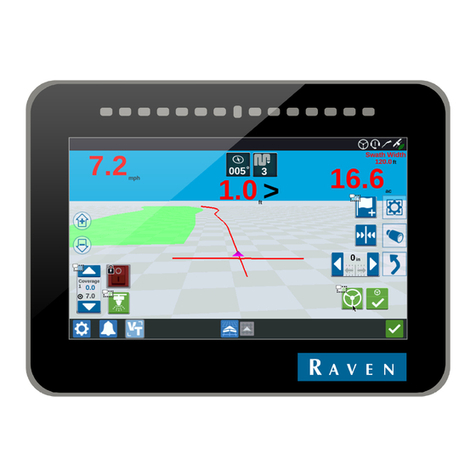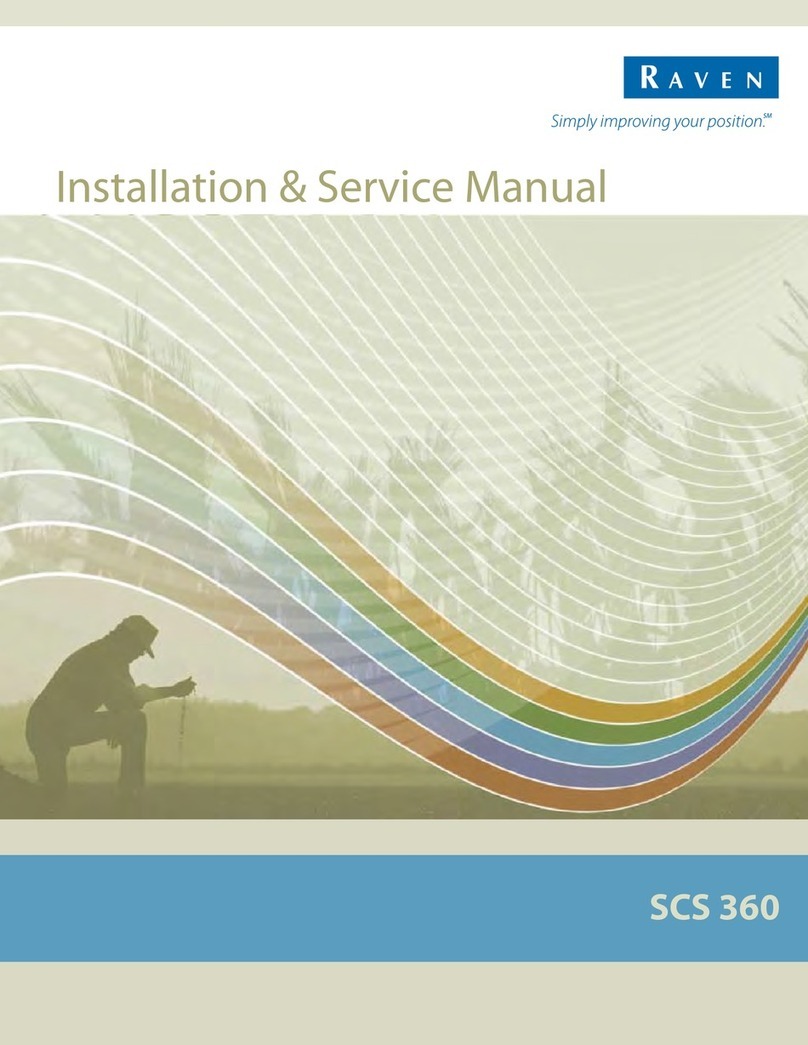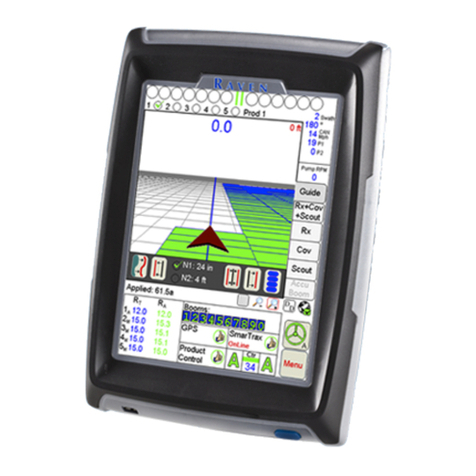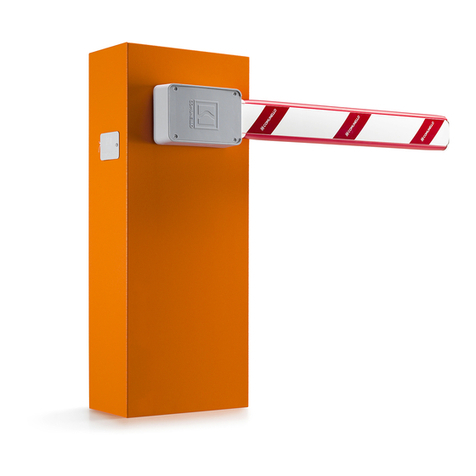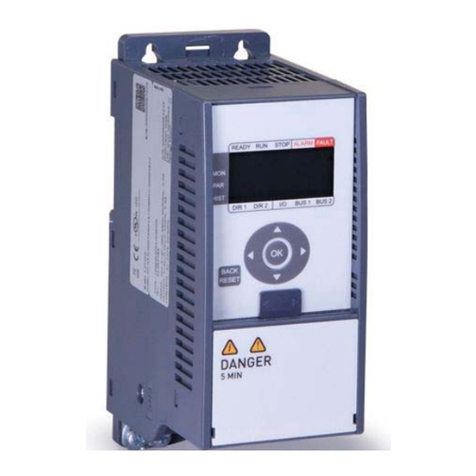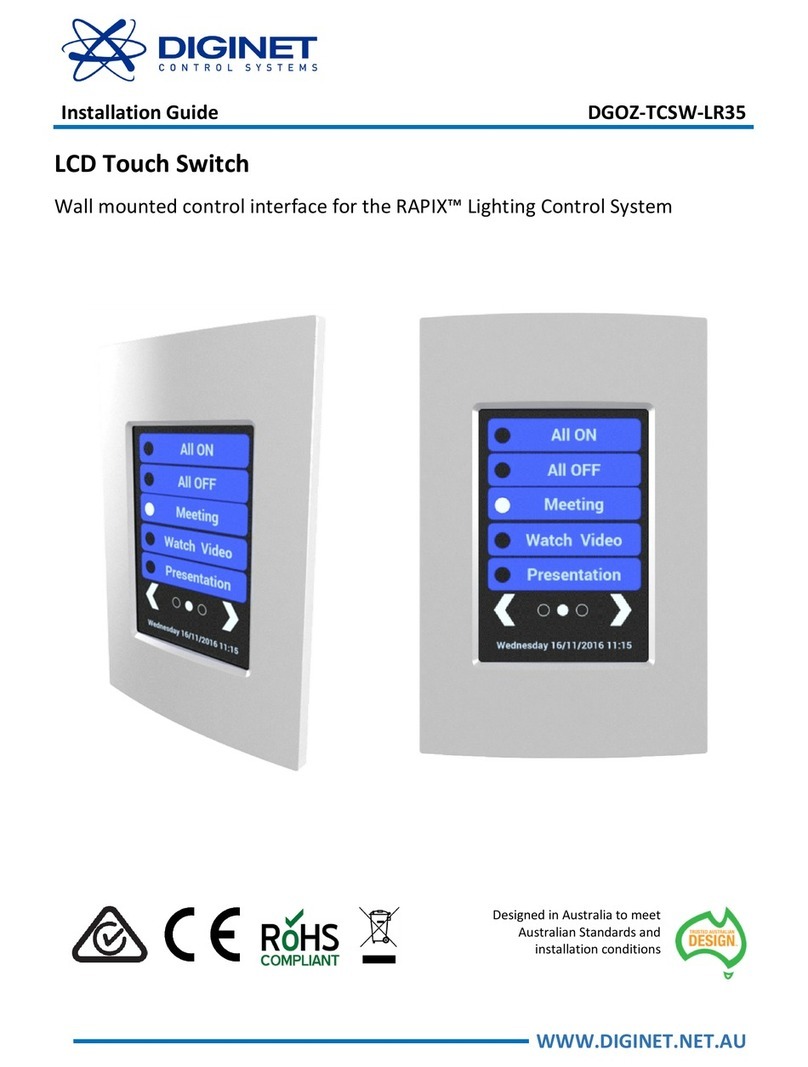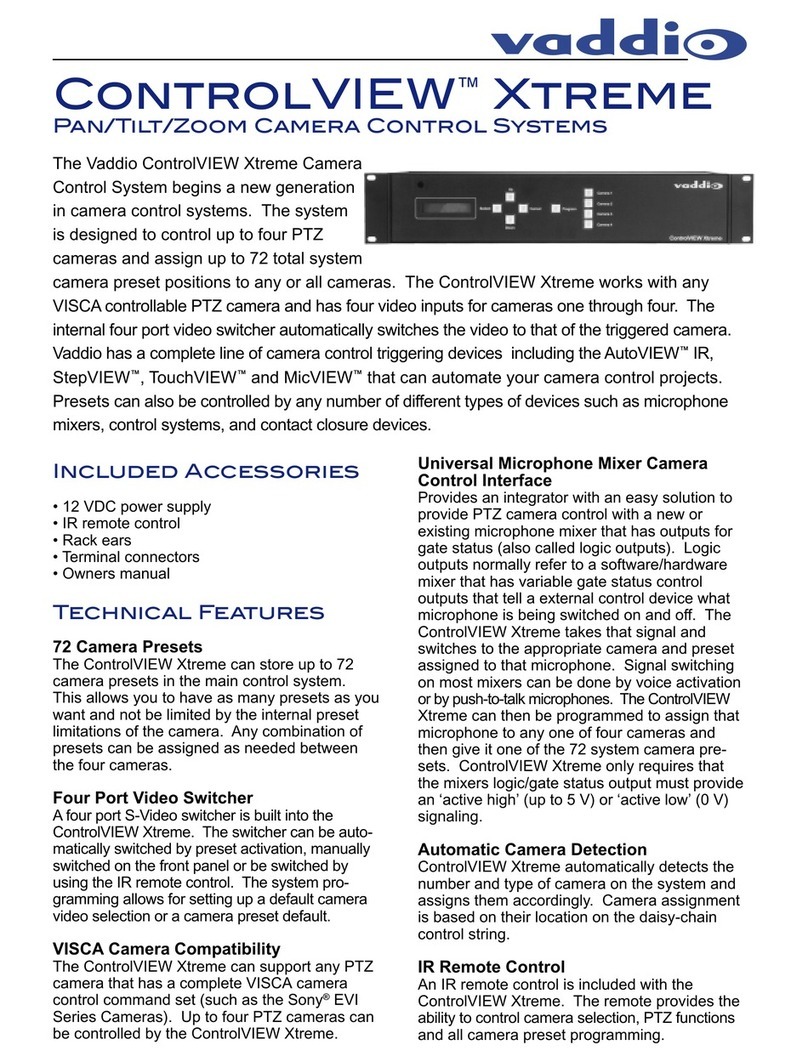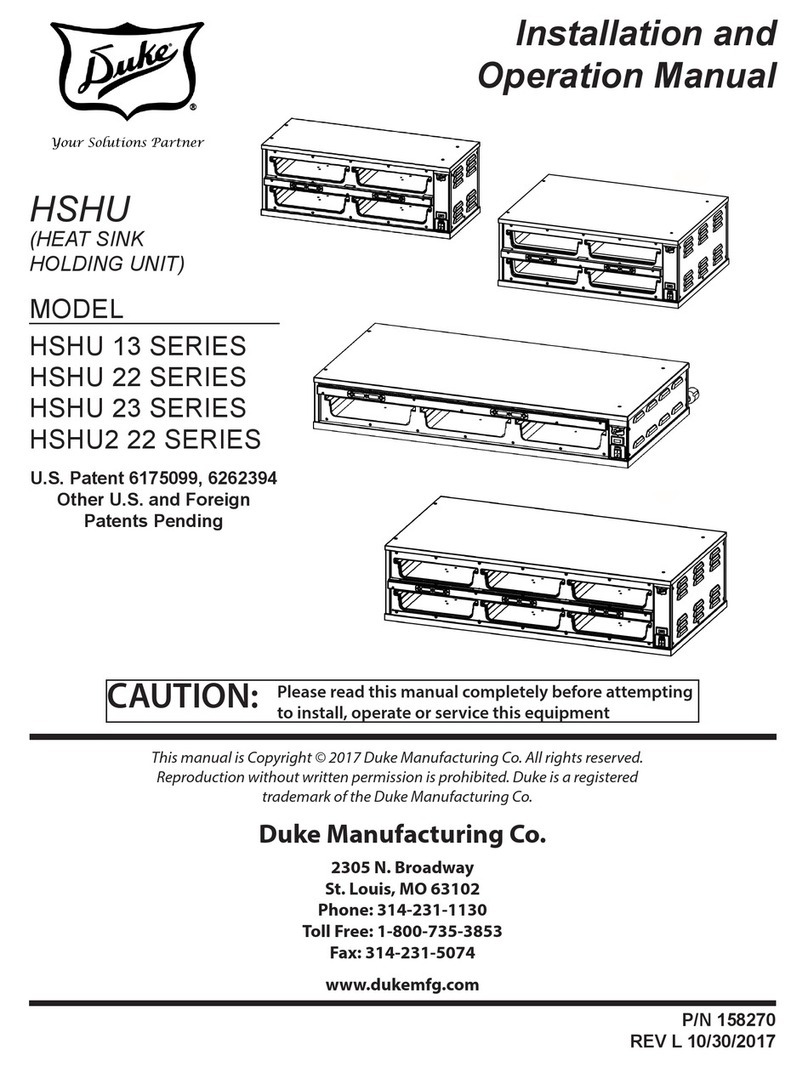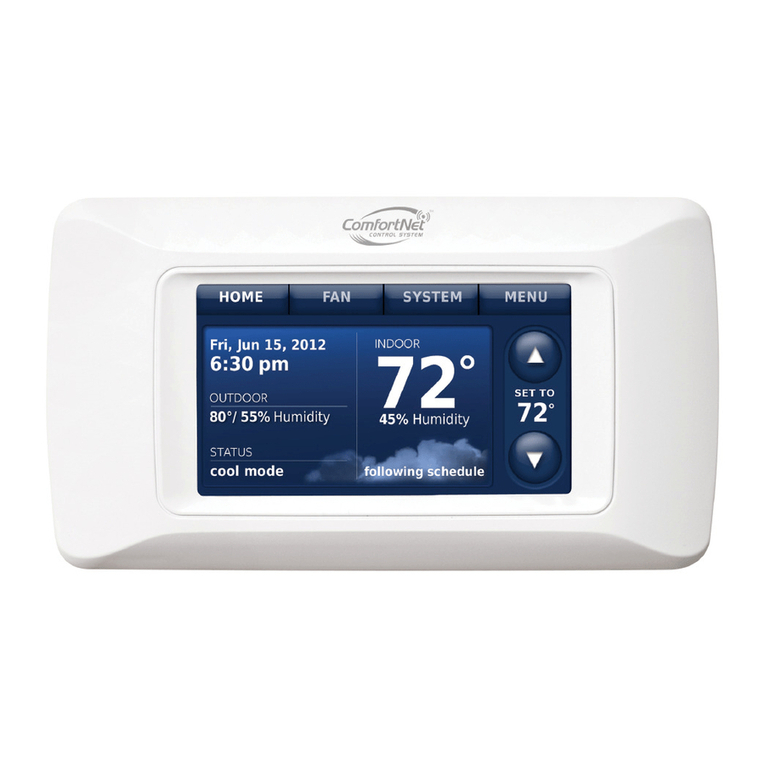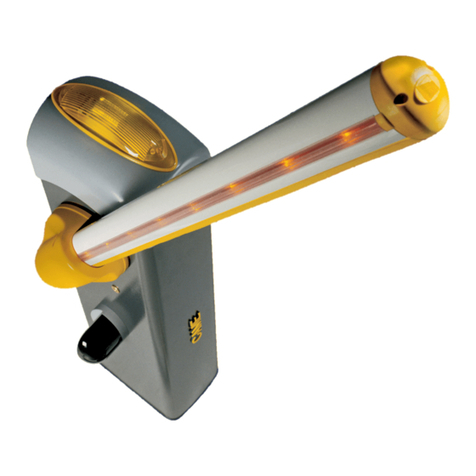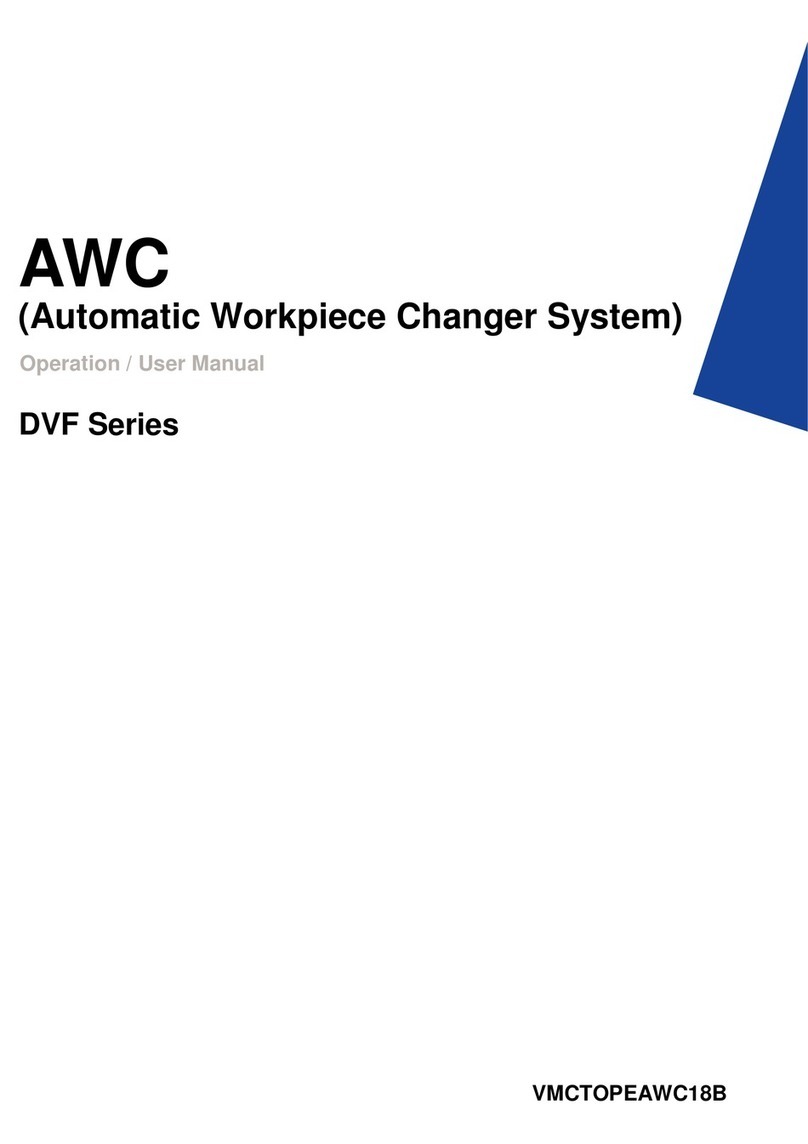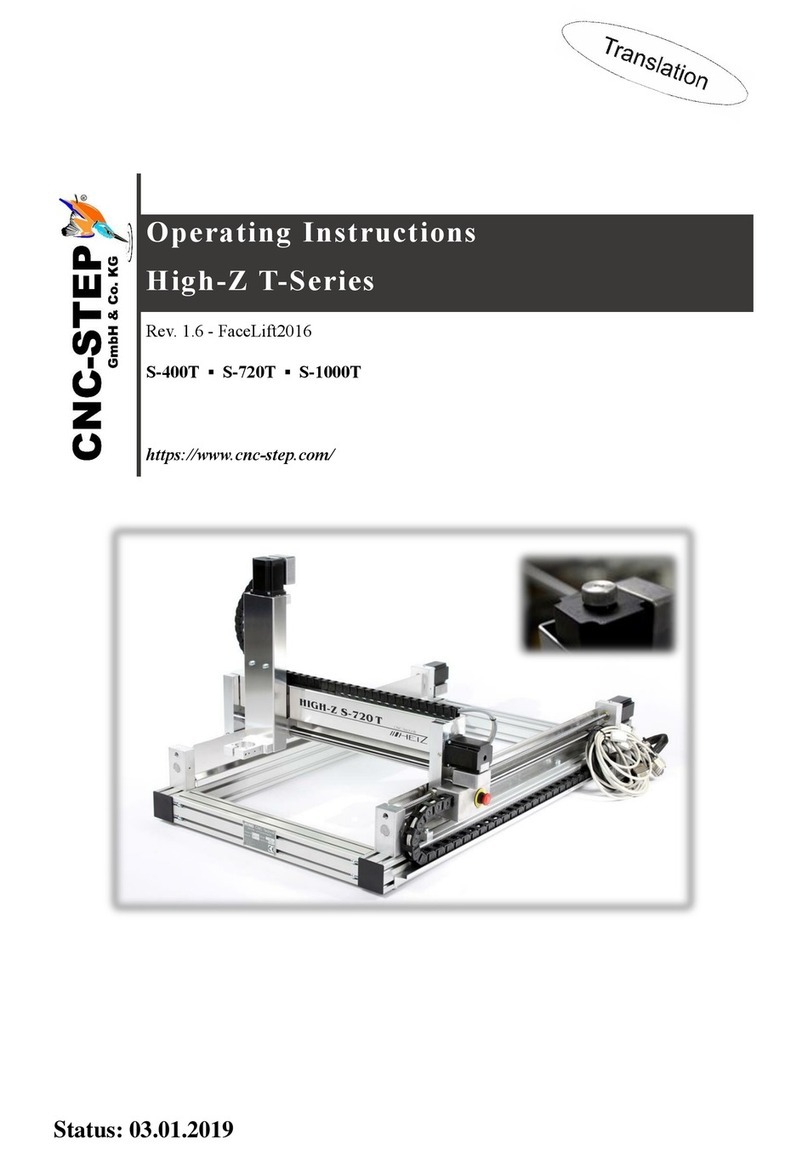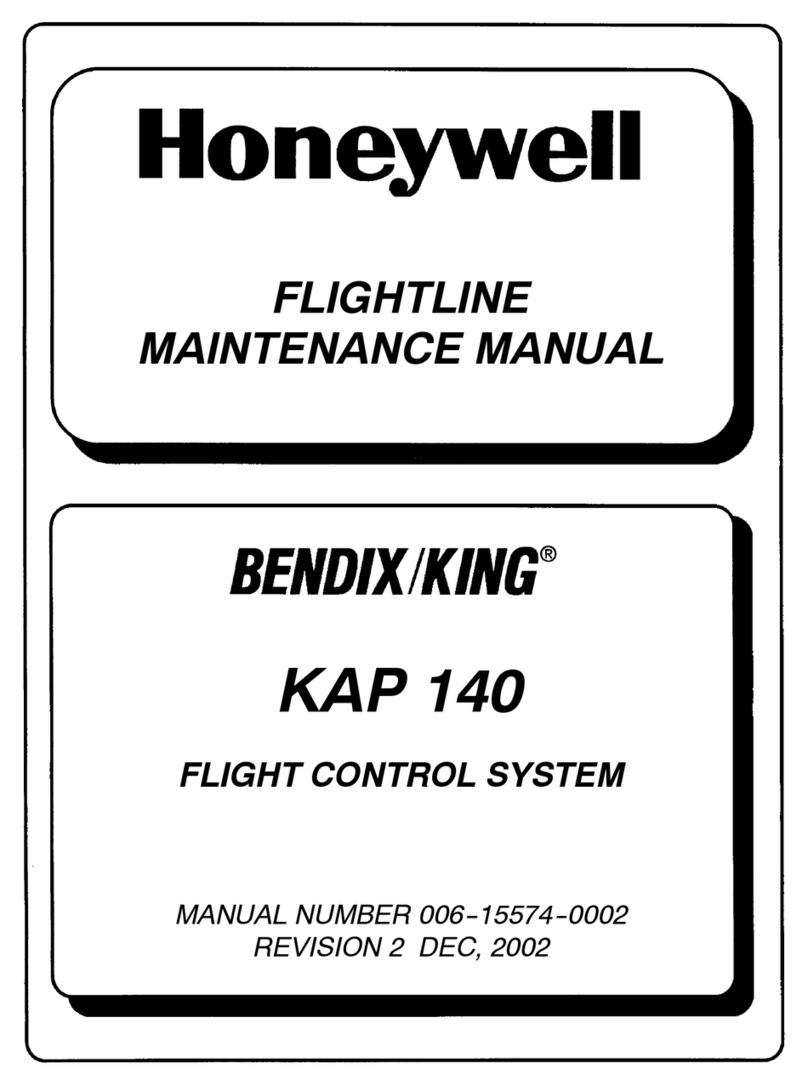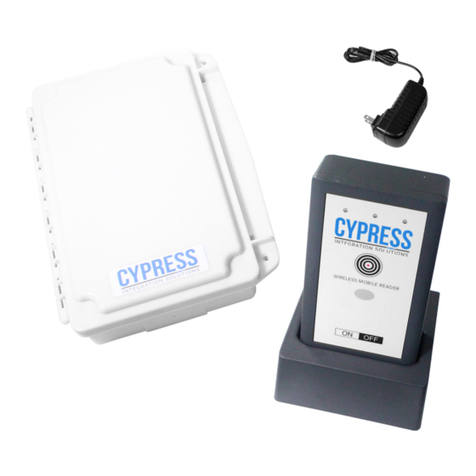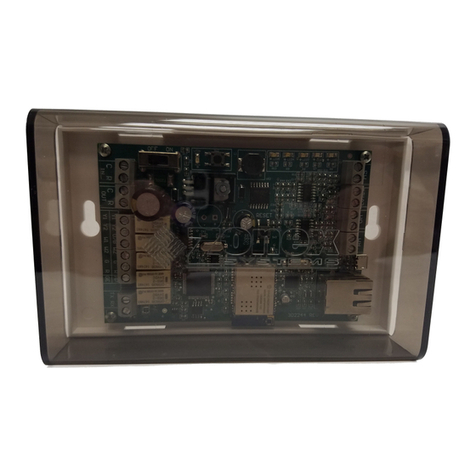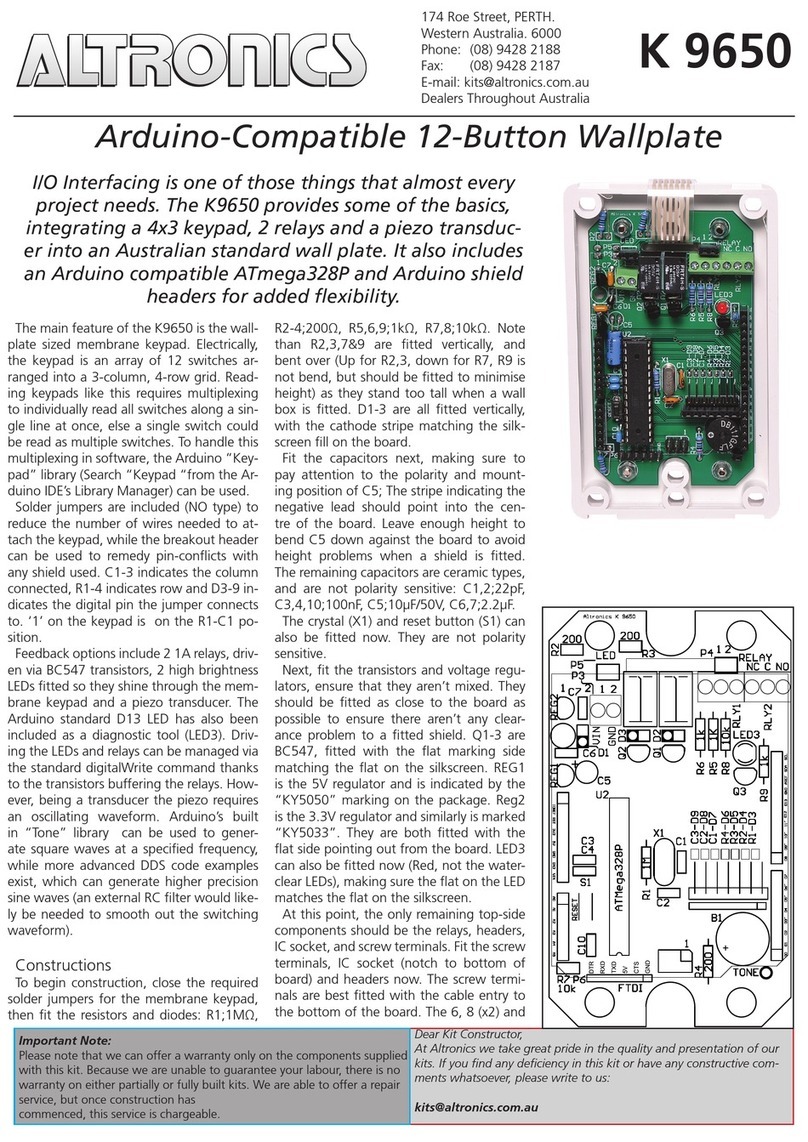
Important Information: Recommendations and Best Practices 3
IMPORTANT INFORMATION
RECOMMENDATIONS AND BEST PRACTICES
AERIALS AND SIGNAL INTERFERENCE
Due to the relatively low broadcast power from satellites, all GNSS receivers and aerials tend to be susceptible to
sources of signal noise and interference as compared to terrestrial signals (i.e. radio or cellular).
NOTE: Poor GNSS signal reception may cause other systems which rely on GNSS solutions (e.g. auto-steer
systems, rate control systems, etc.) to disengage or may cause undesired operation or results.
The following recommendations are intended to provide an optimal environment for GNSS systems and provide
the best up-time results, even as sources of interference may spike throughout the day.
• Mount GNSS antennas with a clear, unobstructed view of the sky.
•A minimum clearance of 1 m [39 in] is recommended around the GNSS antenna to help avoid
common issues with signal interference. Do not mount cellular, radio, or other GNSS antennas
within this area.
•Mount the GNSS antenna to the tallest point of the machine. Avoid mounting the antenna in a
location where obstructions (e.g. bins/hoppers, cab roof lines, equipment frame or structural
elements, etc.) may rise into the antenna view.
NOTE: The antenna view typically starts 5° to 10° above horizontal from the base of the antenna and extends
over the skyward face of the receiver/antenna.
• GNSS is a line-of-sight system. A clear path must exist between the satellite and the GNSS antenna.
•Obstructions such as buildings, tree branches and limbs, as well as components of the vehicle such
as a fiberglass or metal roof, and etc. may cause signal multi-path or completely block the GNSS
receiver.
• Electrical and magnetic fields can interfere with GNSS or L-Band signals.
•Avoid mounting GNSS receivers or antennas near components such as radio or cellular antennas,
electrical motors, generators, alternators, strobe lights, radio transmitters, radio or cellular
antennas, etc.
•Over-head power lines, microwave dishes, radar, other active antennas, etc. can interfere with GNSS
signal.
• Mount the Field Hub cellular and diversity antennas at least 1 m [39 in] apart. Avoid mounting other cellular,
radio, or GNSS aerials within this area.
HARNESS ROUTING
The word “harness” is used to describe any electrical cables and leads, both bundled and unbundled. Use the
following guidelines and recommendations when connecting and routing harnesses while installing or
maintaining this Raven system:
• Leave protective caps/covers over harness connectors until needed to avoid dirt and moisture from
contaminating electrical circuits.
• Secure the harness to the frame or solid structural members at least every 12 in [30 cm].
• Follow existing harness runs already routed on the implement as much as possible. Proper harness routing
should: •Secure harnessing and prevent the harness from hanging below the implement.
•Provide sufficient clearance from moving components and operational zones around shafts;
universal joints and suspension components; pulleys, gears, belts, and chains; moving linkages,
cylinders, articulation joints, etc.
